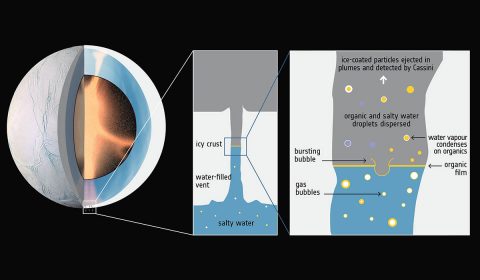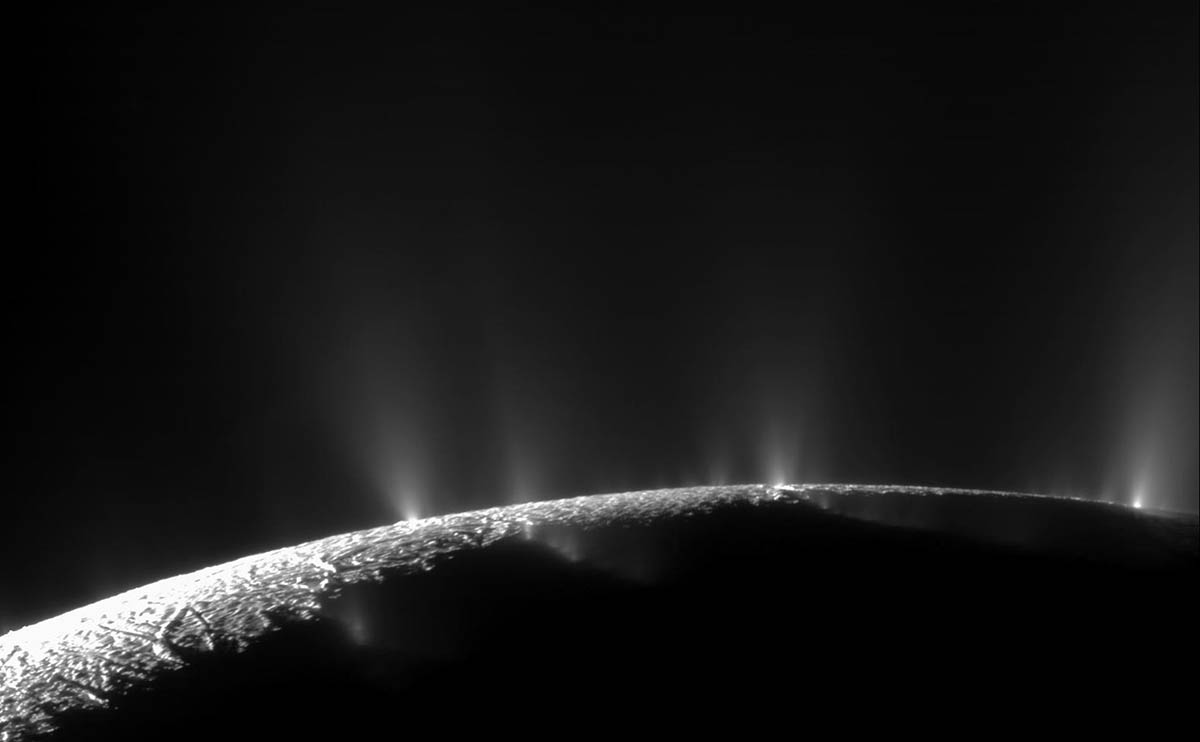NASA’s Jet Propulsion Laboratory
 Pasadena, CA – Data from NASA’s Cassini spacecraft reveal complex organic molecules originating from Saturn’s icy moon Enceladus, strengthening the idea that this ocean world hosts conditions suitable for life. Research results show much larger, heavier molecules than ever before.
Pasadena, CA – Data from NASA’s Cassini spacecraft reveal complex organic molecules originating from Saturn’s icy moon Enceladus, strengthening the idea that this ocean world hosts conditions suitable for life. Research results show much larger, heavier molecules than ever before.
Powerful hydrothermal vents mix up material from the moon’s water-filled, porous core with water from the moon’s massive subsurface ocean – and it is released into space, in the form of water vapor and ice grains. A team led by Frank Postberg and Nozair Khawaja of the University of Heidelberg, Germany, continues to examine the makeup of the ejected ice and has recently identified fragments of large, complex organic molecules.

Previously, Cassini had detected small, relatively common organic molecules at Enceladus that were much smaller. Complex molecules comprising hundreds of atoms are rare beyond Earth.
The presence of the large complex molecules, along with liquid water and hydrothermal activity, bolsters the hypothesis that the ocean of Enceladus may be a habitable environment for life.
The results are published today in Nature.
Such large molecules can be created by complex chemical processes, including those related to life, or they can come from primordial material in some meteorites.
At Enceladus, it’s most likely they come from hydrothermal activity driving complex chemistry in the core of the moon, Postberg said.

“In my opinion, the fragments we found are of hydrothermal origin; in the high pressures and warm temperatures we expect there, it is possible that complex organic molecules can arise,” Postberg said.
The organic material is injected into the ocean by hydrothermal vents on the floor of Enceladus’ ocean – something akin to the hydrothermal sites found at the bottom of the oceans on Earth, which are one of the possible environments that scientists investigate for the emergence of life on our own planet.
After rising near the top of the ocean, the bubbles may burst or otherwise disperse the organics, where they were detected by Cassini.
“Continuing studies of Cassini data will help us unravel the mysteries of this intriguing ocean world,” said Cassini Project Scientist Linda Spilker of NASA’s Jet Propulsion Laboratory, Pasadena, California.
The Cassini-Huygens mission is a cooperative project of NASA, ESA (European Space Agency) and the Italian Space Agency. NASA’s Jet Propulsion Laboratory, a division of Caltech in Pasadena, manages the mission for NASA’s Science Mission Directorate, Washington.
The Cassini spacecraft deliberately plunged into Saturn on September 15th, 2017. JPL designed, developed and assembled the Cassini orbiter. The radar instrument was built by JPL and the Italian Space Agency, working with team members from the U.S. and several European countries.



